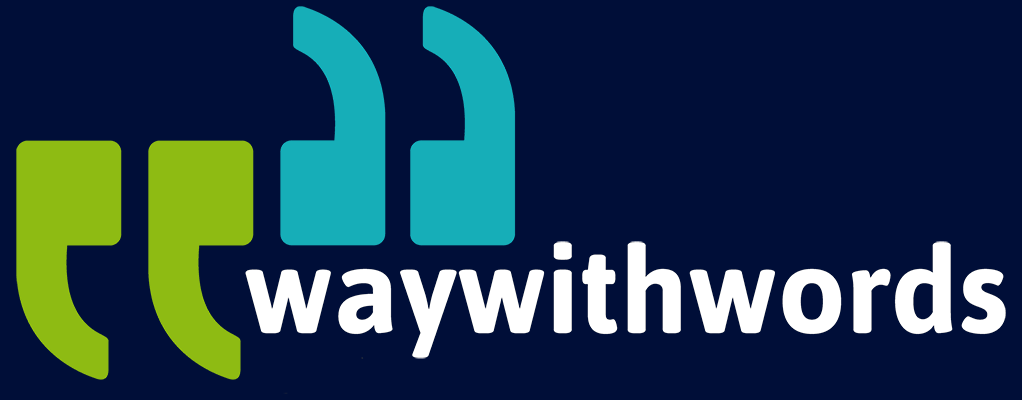How is Call Centre Audio Harvested for Speech Research?
A Goldmine of Real-world Spoken Data
Call centres are one of the richest sources of spoken data in the modern world. Every day, millions of calls are made across industries like banking, healthcare, retail, and telecommunications. These conversations are not just customer service exchanges — they are valuable windows into natural human dialogue and range from simple interactions to bilingual and complex interchanges. For researchers, especially those working in conversational AI, natural language processing (NLP), and voice analytics, call centre speech data provides a goldmine of authentic, real-world material.
This article explores how call centre audio is harvested for speech research. It will examine why this type of data is valuable, how it is extracted, what privacy and compliance frameworks shape its use, the challenges of annotation and diarisation, and how call audio datasets are applied in conversational AI and sentiment analysis.
Why Call Centre Audio Is Valuable
Call centre speech data stands apart from staged or laboratory-collected speech because it is grounded in reality. Unlike scripted prompts or rehearsed recordings, call audio datasets capture spontaneous interactions between people who have a genuine purpose in the conversation. This authenticity is what makes the material so valuable.
First, call centre audio contains naturally occurring dialogue. Callers explain problems, ask questions, express frustration, or share gratitude in real time. Agents respond with explanations, clarifications, or empathy. These exchanges provide researchers with real-life examples of how people phrase requests, shift tone, or respond to stress. This makes the data particularly useful for training conversational models that need to sound natural rather than robotic.
Second, call centres bring together a remarkable diversity of accents and speaking styles. A telecom support centre in South Africa, for instance, may receive calls from speakers of Afrikaans, isiXhosa, English, and Sesotho, all in a single day. Similarly, a UK-based bank may interact with callers of different national origins and dialects. For researchers building speech recognition systems, this diversity helps test whether their models can handle broad linguistic variation.
Third, the acoustic conditions of call centre audio mirror real-world environments. Unlike controlled studio recordings, call audio datasets capture background noises, microphone distortions, and variable call quality. These imperfections are not flaws — they are opportunities. By training AI systems on such data, researchers prepare them to perform well in unpredictable real-world scenarios, such as understanding a caller on a noisy mobile line.
Finally, call centre audio includes emotion-laden exchanges. Whether it is a frustrated customer whose internet is down, or a relieved caller whose problem has just been solved, these emotional cues are embedded in tone, pace, and choice of words. For sentiment analysis and voice analytics, such natural displays of emotion are invaluable.
In short, call centre voice recordings are prized in speech research because they capture natural, diverse, spontaneous, and acoustically varied dialogue that cannot be reproduced in a laboratory setting.

Data Extraction Techniques
Harvesting call audio datasets for research is a highly technical process. It requires capturing call centre speech data in a way that is accurate, scalable, and compliant with privacy regulations. Several methods and tools are used, depending on the organisation’s telephony infrastructure.
One of the most common systems in call centres is the PBX (Private Branch Exchange) system. These are internal telephone networks that route calls within an organisation and connect them to outside lines. Many PBX systems come with built-in call recording modules that can store conversations automatically. Researchers working with call centres often tap into these recordings to build datasets.
VoIP (Voice over Internet Protocol) integration is another pathway. Since many modern call centres use internet-based telephony, VoIP platforms can be configured to record calls natively. Cloud-based VoIP systems often allow easy retrieval of large volumes of calls, which can then be filtered for research purposes.
Call recording tools also play a central role. Dedicated software packages can capture audio streams from agents’ desktops or from central servers. These tools often allow tagging and indexing, which make it easier to locate and organise the harvested material.
Importantly, all of these approaches must be consent-based. Ethical and legal standards require that callers are informed their conversation may be recorded. This is why many support lines begin with the message, “This call may be recorded for quality and training purposes.” For research projects, explicit consent from participating organisations and, in some cases, the individuals themselves, is required before audio can be harvested and repurposed.
Consent-based retrieval means that researchers cannot simply collect audio indiscriminately. Instead, they rely on partnerships with call centres, data brokers, or speech collection services that ensure all recordings are obtained legally and transparently.
Thus, while the technical infrastructure for harvesting is sophisticated — from PBX systems to VoIP platforms and dedicated recording tools — it is the overlay of consent and compliance that ensures the resulting call audio datasets can be used safely and ethically.
Privacy and Compliance Requirements
One of the most sensitive aspects of using voice recordings from support centres is the question of privacy. Call centre conversations are often filled with personal information: names, addresses, account numbers, medical details, and more. For this reason, strict legal and regulatory frameworks govern how such data can be harvested, stored, and used for speech research.
At the most basic level, there is the requirement of call recording disclosures. Call centres must inform callers that their conversations may be recorded. This disclosure is not only a matter of courtesy — it is a legal safeguard. Without it, any audio captured could be deemed unlawful.
Beyond disclosure, anonymisation is critical. Before call centre speech data can be shared with researchers, personal identifiers are usually removed. This can involve redacting names, replacing numbers with placeholders, or using voice anonymisation tools that distort identifiable vocal features while preserving linguistic content.
The regulatory frameworks that govern call centre audio vary by jurisdiction but share common themes. In Europe, GDPR sets strict requirements on data protection and the rights of individuals. In South Africa, POPIA (Protection of Personal Information Act) provides similar protections. In the United States, state laws like California’s CCPA also establish strong privacy rights.
Compliance is not just about following the letter of the law; it is about maintaining trust. Organisations that misuse or mishandle call audio datasets risk not only legal penalties but also reputational damage. Researchers and companies working with call centre voice recordings must therefore adopt robust data governance policies: secure storage, access controls, audit trails, and strict data minimisation practices.
Ultimately, the value of call centre audio lies not just in its authenticity, but in its responsible use. Privacy and compliance ensure that the benefits of speech research do not come at the expense of individual rights.
Annotation and Diarisation Challenges
Once call centre audio has been harvested, the next step is making it usable for research. Raw recordings are not enough; they need to be annotated, diarised, and structured in a way that reveals their linguistic and acoustic value. This stage comes with its own set of challenges.
Annotation involves transcribing the spoken content, tagging relevant features, and aligning text with audio. In call centre audio, this is not straightforward. Conversations are often fast-paced, with interruptions, hesitations, and colloquial expressions. Unlike scripted recordings, call audio datasets demand a high level of linguistic expertise to capture the nuances accurately.
Diarisation — the process of distinguishing who is speaking when — is another key challenge. In a call centre recording, there are usually two main participants: the agent and the caller. While this may sound simple, real-life calls often include overlapping speech, long pauses, or moments when background voices intrude. Separating these streams requires advanced algorithms that can identify speaker boundaries and maintain accuracy across noisy conditions.
Emotions further complicate the process. A frustrated customer may raise their voice, while an empathetic agent may speak softly. These tonal shifts affect the acoustic profile and can confuse diarisation models. Researchers must account for these dynamics when annotating call centre speech data.
Background noise is also unavoidable. From office chatter and keyboard clicks on the agent’s end to television or traffic sounds on the caller’s end, these noises add complexity. While they make annotation harder, they also enhance the value of call audio datasets, since they represent real-world conditions that AI systems must be trained to handle.
Despite these hurdles, annotation and diarisation are indispensable. They transform unstructured call audio into structured voice recordings from support centres that can be analysed systematically. Whether the goal is training a conversational AI or studying sentiment, high-quality annotation is the bridge between raw audio and actionable insights.

Use in Conversational AI and Sentiment Analysis
The ultimate reason researchers and organisations harvest call centre speech data is to apply it in cutting-edge technologies. Two of the most prominent applications are conversational AI and sentiment analysis.
Conversational AI relies heavily on call audio datasets because they provide real examples of how humans interact with service agents. By training models on this data, developers can build chatbots and voice assistants that handle queries naturally. For instance, a customer service bot trained on authentic call centre audio will know not only what customers ask, but how they ask it — including hesitations, slang, or indirect phrasing.
Intent detection is another critical use. By analysing voice recordings from support centres, AI systems can learn to recognise the underlying intent behind a customer’s words. For example, “I’ve been waiting for two weeks already” signals dissatisfaction, even if the customer does not explicitly say they are unhappy. Training AI on such data helps organisations anticipate needs and respond proactively.
Sentiment analysis takes this a step further. By examining tone, pace, and emotional cues, systems can infer whether a caller is frustrated, neutral, or satisfied. This has enormous implications for customer service. Imagine a real-time system that alerts supervisors when a call is heading towards escalation so they can intervene promptly.
Call centre speech data also feeds into predictive models. By analysing thousands of calls, researchers can identify patterns that predict customer churn, detect product issues, or forecast service bottlenecks. These insights drive smarter business decisions and better customer experiences.
The overlap between conversational AI and sentiment analysis is especially powerful. Together, they allow organisations to not only automate customer interactions but also understand the human feelings behind them. In this sense, call audio datasets are not just technical resources — they are the foundation for more empathetic, intelligent, and responsive technologies.
Final Thoughts on Call Centre Speech Data
Call centre audio represents one of the most authentic and valuable forms of spoken data available today. Harvested responsibly, it provides researchers and developers with a window into natural dialogue, diverse accents, and real-world acoustic conditions. Through advanced extraction techniques, strong compliance frameworks, and meticulous annotation, these voice recordings from support centres are transformed into structured datasets that power the next generation of AI.
From conversational AI to sentiment analysis, the applications of call centre speech data are vast and transformative. Yet the success of these technologies rests not only on the data itself but on the responsible and ethical ways in which it is collected, processed, and applied.
As customer service continues to evolve, call centres will remain a critical hub for speech research. Their voices — diverse, authentic, and unfiltered — will continue to shape the technologies that define how humans and machines communicate.
Resources and Links
Call Centre – Wikipedia – Defines the call centre industry, including call handling, recording practices, and telephonic infrastructure.
Way With Words: Speech Collection – Way With Words excels in real-time speech data processing, leveraging advanced technologies for immediate data analysis and response. Their solutions support critical applications across industries, ensuring real-time decision-making and operational efficiency.
